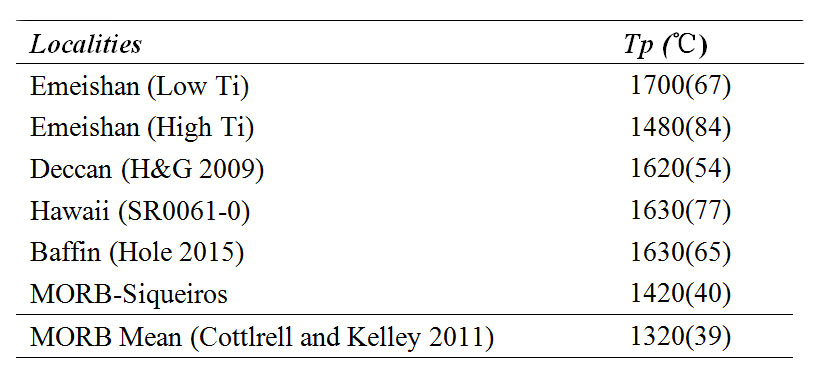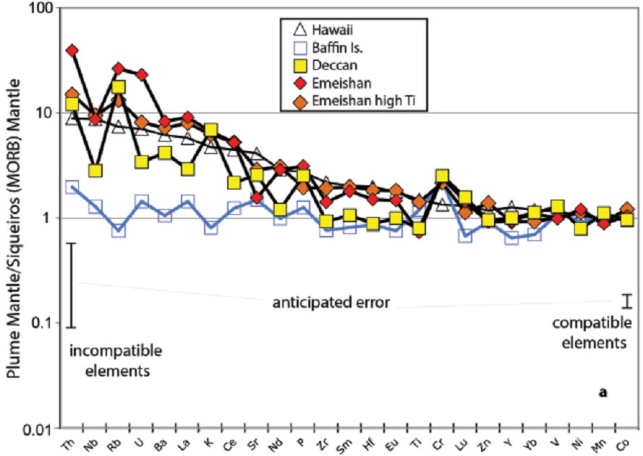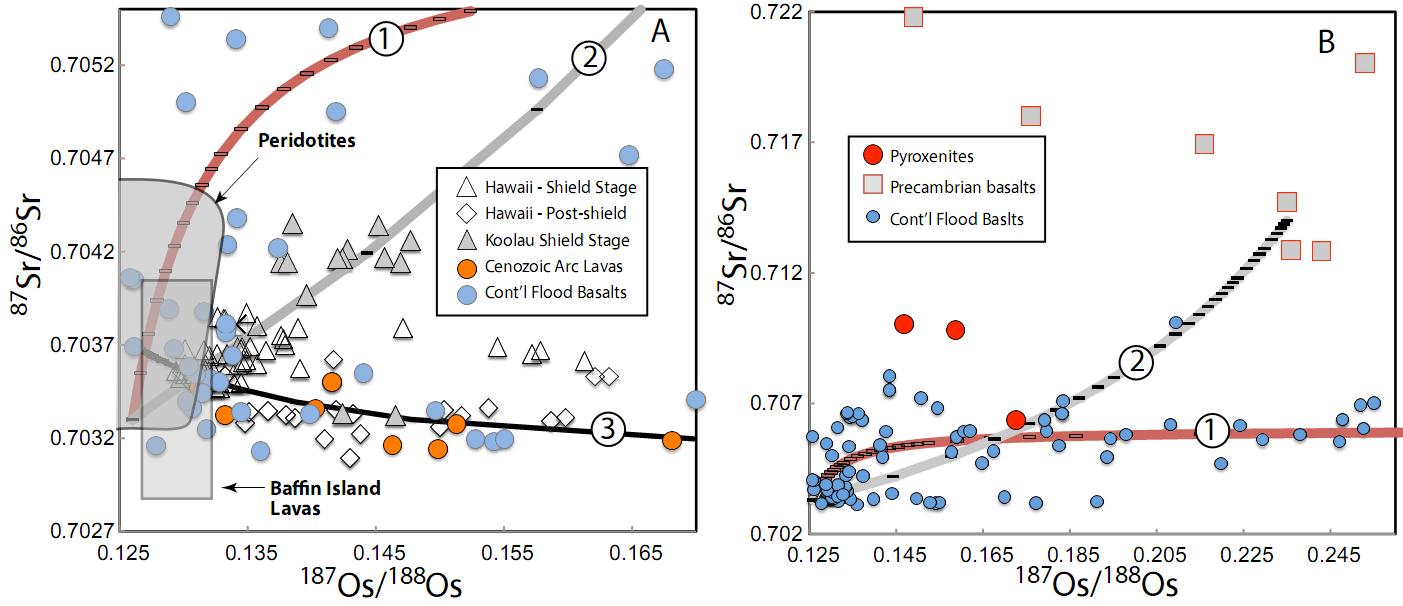The composition and mineralogy of Earth's lower mantle is an enduring obscurity. Mantle plumes are thought to originate as deep-seated thermal plumes from the core-mantle boundary, and their sources may provide most direct view of the lower mantle.
Prof. TAO Yan from the Institute of Geochemistry of the Chinese Academy of Sciences (IGCAS), collaborating with an international research team led by Prof. Keith Putirka from the California State University, Fresno, has studied the samples of volcanic rocks including a type example of a mantle plume (Hawaii), two of the largest volcanic "flood" basalt provinces in Earth history (Deccan, Emeishan), a food basalt that erupted in a continental rift setting (Baffin Island), and the lavas from the Siqueiros Transform at the East Pacific Rise, which represent the mid-ocean ridge system.
Their study had the goal of better constraining the mantle plume source, with the idea being that if plumes (Hawaii, Emeishan, Deccan, Baffin Island) truly originate from the lower mantle or core/mantle boundary, then they should be compositionally distinct from lavas erupted at mid-ocean ridge spreading centers (Siquieros), which are thought to tap the uppermost mantle.
A key finding of the study is that the flood basalts and modern plumes both exhibit very high eruptive temperatures, which confirms the idea that such volcanic features may derive from the core/mantle boundary.
The results show that plumes appear to entrain up to 25% subducted oceanic crust, rather than the nearly 100% indicated in the original model. Particularly, the Baffin Island plume, though equally as hot (and so presumably equally as deep) as Hawaii, appears to have entrained 0% subducted crust.
The Baffin source is very hot, with a mantle potential temperature (Tp) of 1630 °C, and so it is inferred to be rooted in as a deep part of the mantle as any other mantle plume. But Baffin interestingly has a mantle source with trace element contents that are quite similar to that for the mid-ocean ridge basalt (MORB). However, unlike MORB, Baffin contains an isotopic signature indicating its isolation from the rest of the mantle for 4.5 Ga.
The above facts appear to mean that the Baffin source has been uniquely unaffected by admixtures of young subducted crust, and so they depict an image of lower mantle: a depleted matrix that pervades the lowermost mantle that elsewhere receives subducted crust, but in this model, recycled slabs do not permeate all deep mantle reservoirs, as shown from Baffin, either because subducted slabs are unevenly interred, or perhaps because the Baffin source lies below this graveyard as a dense under-layer.
This study also rejects the idea suggested by Sobolev et al. (2007) that high Ni-in-Ol from many plumes requires parental liquids that formed by partial melting of a pyroxenite source. The data analysis suggests that the pyroxenite model is unnecessary and untenable.
Plume-derived olivine grains, range to higher Ni compared to MORB because they crystallize from liquids that are generated at higher degree of partial melting due to higher temperatures. The results illustrate that peridotites instead of pyroxenites are a plausible mineralogy for plume-source from the localities examined.
The work titled “The mantle source of thermal plumes: Trace and minor elements in olivine and major oxides of primitive liquids (and why the olivine compositions don’t matter)” was published in American Mineralogist.
|

|
|
Estimates of mantle potential temperature (Tp) with standard deviations for the selected plumes and MORB (Provided by Keith Putirka) |
|

|
|
The trace element concentrations in the selected plume sources normalized to MORB source mantle (Image by Keith Putirka) |
|

|
|
87Sr/86Sr vs.187Os/188Os ratios for (A) Hawaiian lavas, peridotites and lavas from Baffin Island, Continental Flood Basalts and Cenozoic arc lavas from GEOROC; (B) Continental Flood Basalt (CFB), pyroxenites and Archean lavas from GEOROC. Curve 1 is Kogiso et al.’s (2004) mixing curve for peridotite-“pyroxenite”, Curve 2 shows mixing between the peridotite and a sulfide-bearing peridotite, Curve 3 shows mixing between the peridotite and a radiogenic Os component oceanic lithosphere mantle. (Image by Keith Putirka) |
Contact: TAO Yan
Institute of Geochemistry, Chinese Academy of Sciences
E-mail: taoyan@vip.gyig.ac.cn
(By LIAO Yuqi)